Written by Spencer Hardey, Presented by HG Insights®
Every company, from a bootstrapped startup to a sprawling enterprise, is faced with more potential
accounts than they can effectively focus on. That’s because an unrefined Total Addressable Market
(TAM) is huge.
Historically, most companies dealt with this challenge in an ad-hoc way. The largest companies, FAANG companies, would systematically prioritize their accounts. They had the resources to collect or buy large datasets, farm the necessary insights, and bring order to how they targeted prospects.
But in small or mid-sized companies, account scoring was a mix of “tribal” knowledge, post-it notes, and on-the-fly decision-making.
This has all changed. Today, the tools needed to build a sophisticated account scoring framework are available to every company, big or small.
This is doubly true right now, with macroeconomic headwinds. Budgets are down, belts are tight.
Companies need to do “more with less,” they can’t afford to squander resources chasing prospects
that won’t convert. Every prospecting dollar must be allocated toward accounts with the highest
likelihood to become a paying customer.
For this reason, account scoring is more important than ever. However, it’s deceptively complex and
there are a host of different frameworks.
In this guide, you’ll find a proven method for account scoring, why it matters, how to do it right, and which tools to leverage on your journey.
Account scoring is no longer an elite practice, companies of all sizes use account scoring to prioritize and target their best-fit accounts. And at HG, it’s the most sought-after use case for our product.
Every sales department sits on a list of accounts. Hopefully, these accounts are neatly organized in
a CRM like Hubspot or Salesforce. But they might just be an exhaustive list in a Google Doc, or not
even written down!
Account scoring is the process of evaluating and ranking target accounts based on their likelihood to
purchase a product or service.
Traditional account scoring frameworks have focused on behavioral attributes at the top of the funnel. This is in part thanks to the success of early marketing automation products like Marketo, Pardot, and Eloqua, which made behavioral scoring the norm. However, the reality is that most B2B buyer journeys are more complex and nonlinear, making this legacy approach less effective.
It’s no longer enough to know if an account read one of your whitepapers or clicked on an ad. Now, you need more advanced methods, utilizing deeper data points, to deliver more telling intent signals.
When you score accounts, you order all of your accounts from the more likely to convert (highest score) to the least likely to convert (lowest score). Key data points used to assign scores include:
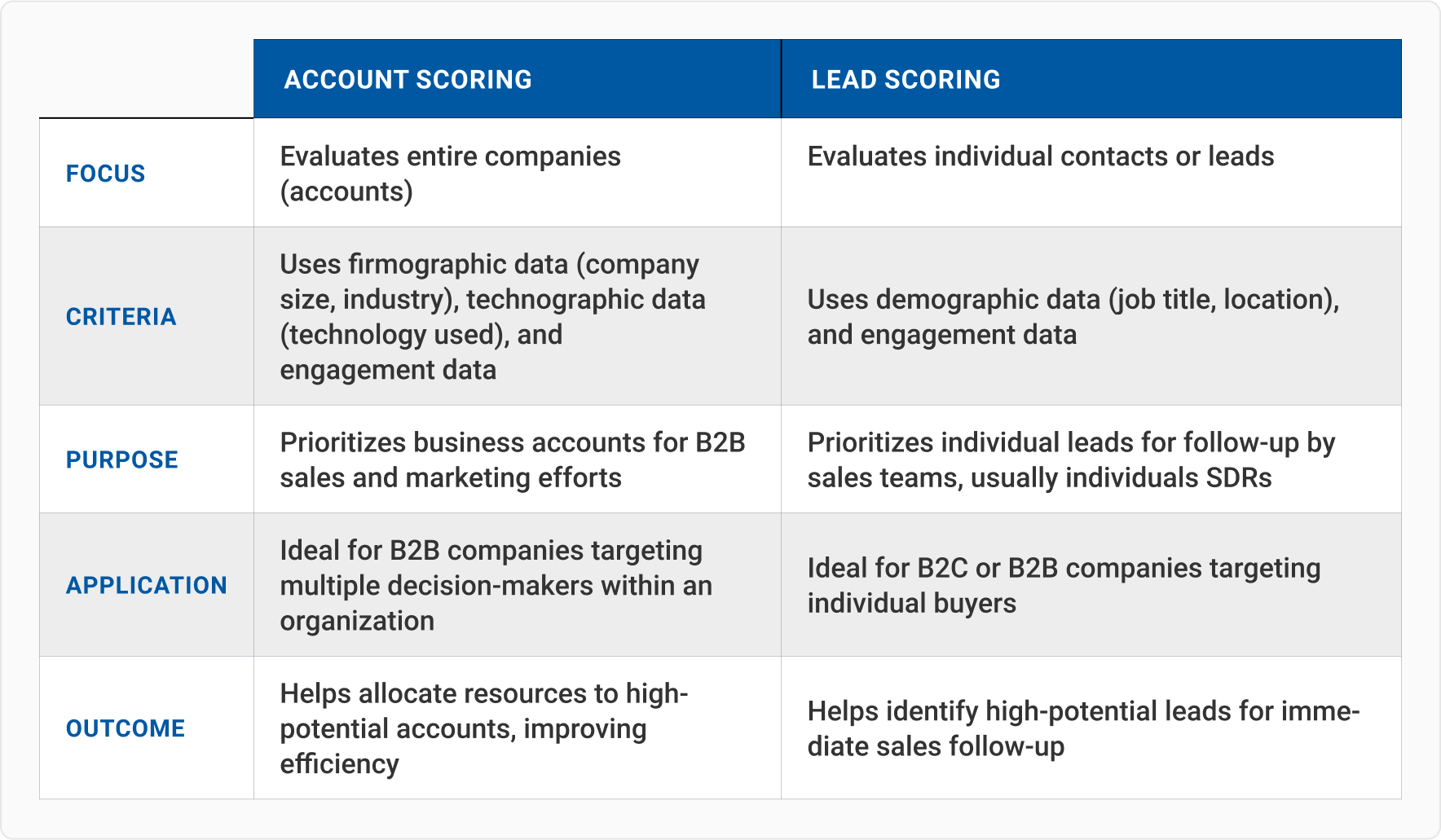
Account scoring and lead scoring are similar. In an effective organization, both should be happening. However, there are some key differences.
To put it simply, account scoring is the most effective way for a company to maximize revenue. Without an account scoring framework in place, organizations are unable to focus on the accounts most likely to buy their product or service. Here’s a breakdown of how account scoring benefits a company, from the organization as a whole all the way down to individual teams.
The Key Benefits:

Account scoring undoubtedly has macro-business benefits. To understand its multifaceted power, it’s useful to unpack how account scoring positively influences different departments.
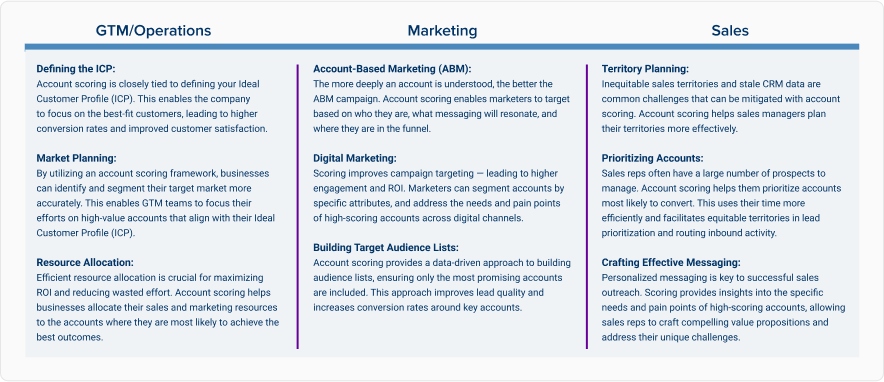
When you utilize an account scoring framework, sales reps will drive more revenue, more inbound leads, better conversion rates, and easier onboarding for your customer success teams.

At HG Insights, we have a proud history of using our proprietary data to build account scoring models. Since
implementation, here’s what our GTM and sales teams have seen:

Building an ICP and account scoring model is essentially intertwined. To a degree, your ICP is simply an account with a perfect score of 100/100. However, to get account scoring right, defining your ICP must come first. Think of your ICP as the benchmark, and the account score measures how close to that benchmark a given prospect comes.
An ICP is the blueprint of a customer who derives the most value from your product or service. ICP accounts are the most likely to convert and bring the highest value to your business. Account scoring ranks potential customers from most to least valuable based on how closely they match your ICP.
To build an ICP, start with some assumptions based on customer interviews, internal knowledge, and insights about your top existing customers. This knowledge can form the basis of your ICP. Over time, through segmentation and scoring, your ICP will evolve and become more targeted, making it a dynamic and continuously improving process.

An ICP is the blueprint of a customer who derives the most value from your product or service. ICP accounts are the most likely to convert and bring the highest value to your business.

ICP accounts are the most likely to convert and bring the highest value to your business. Account scoring ranks potential customers from most to least valuable based on how closely they match your ICP.
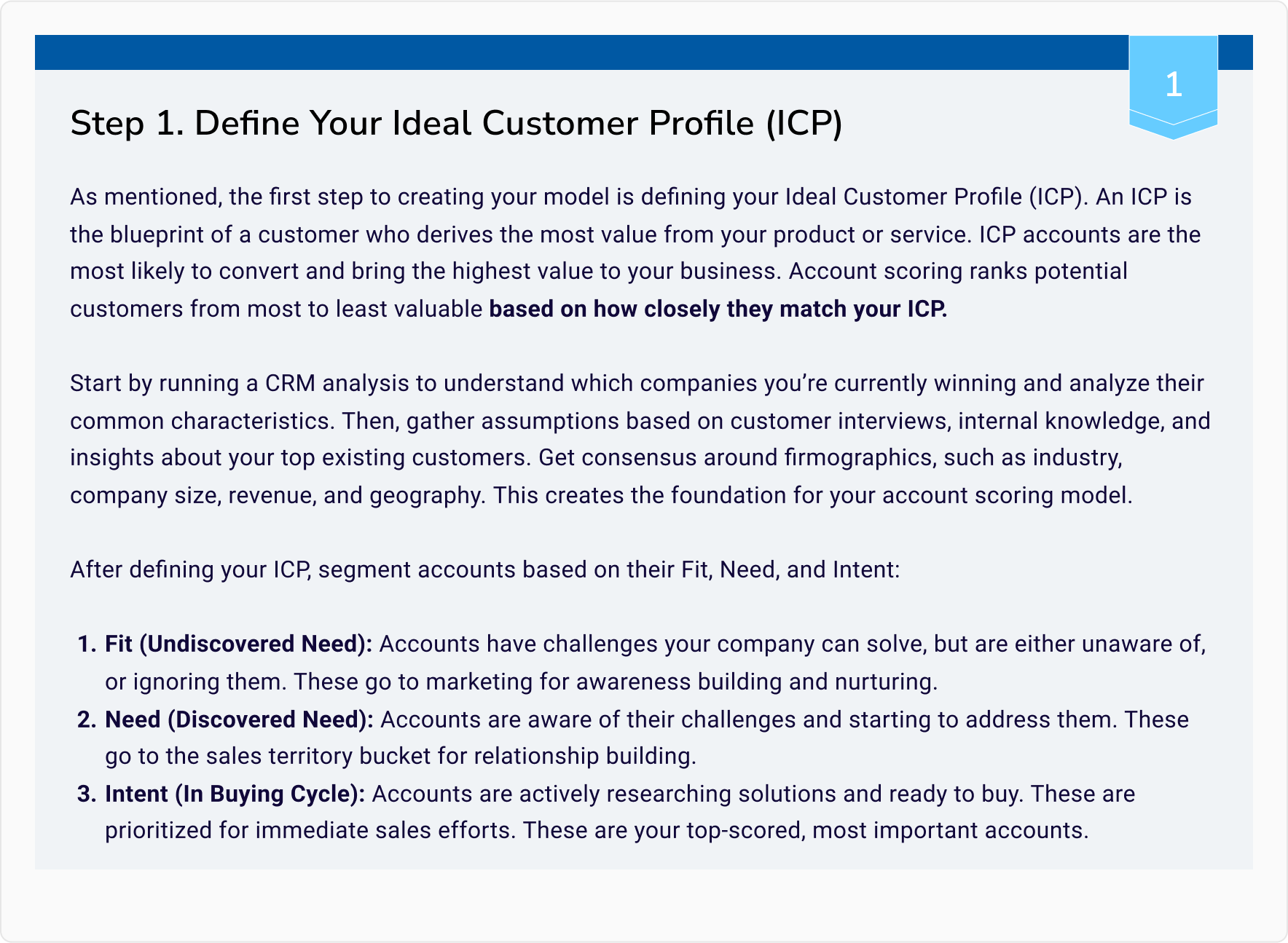
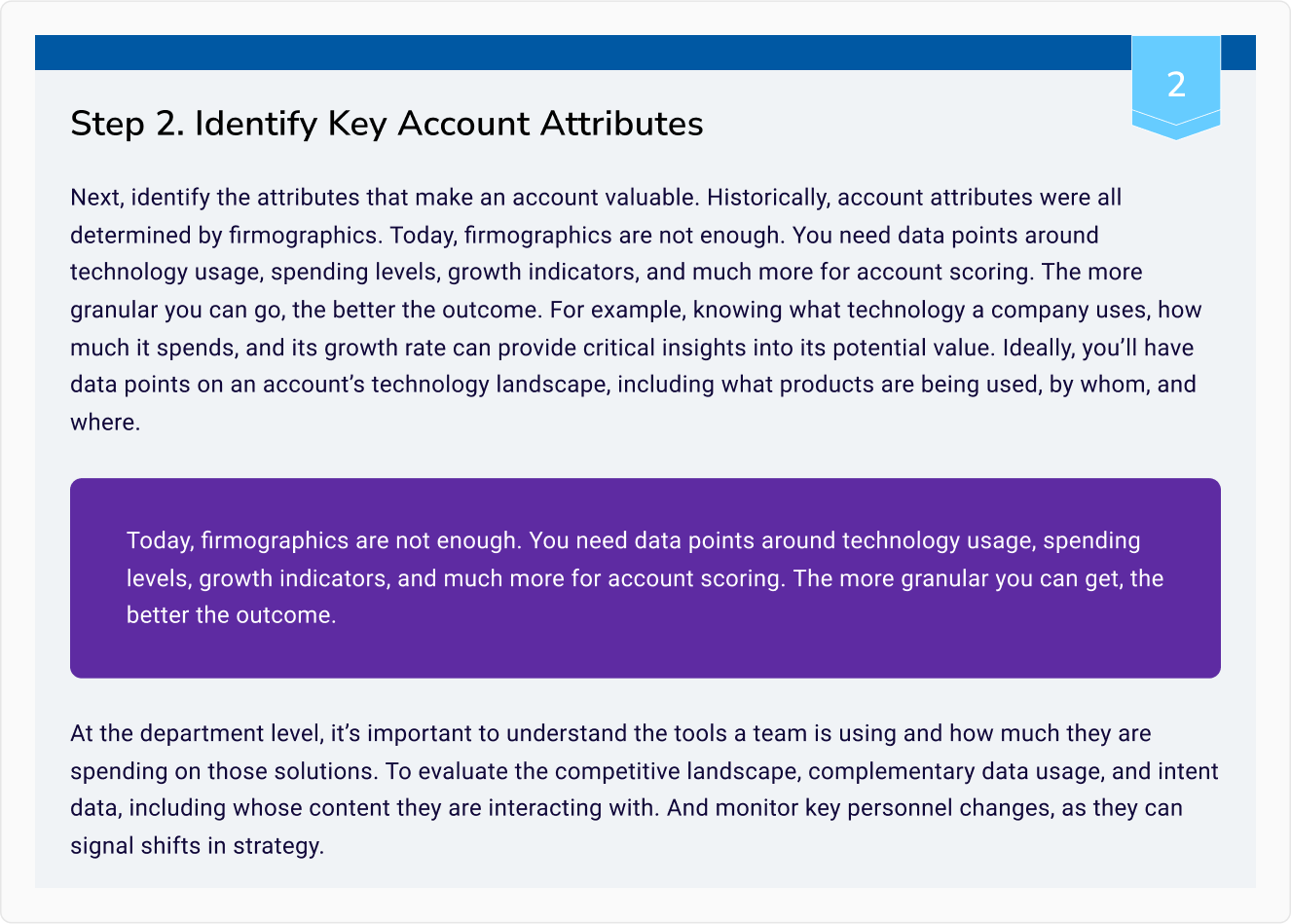
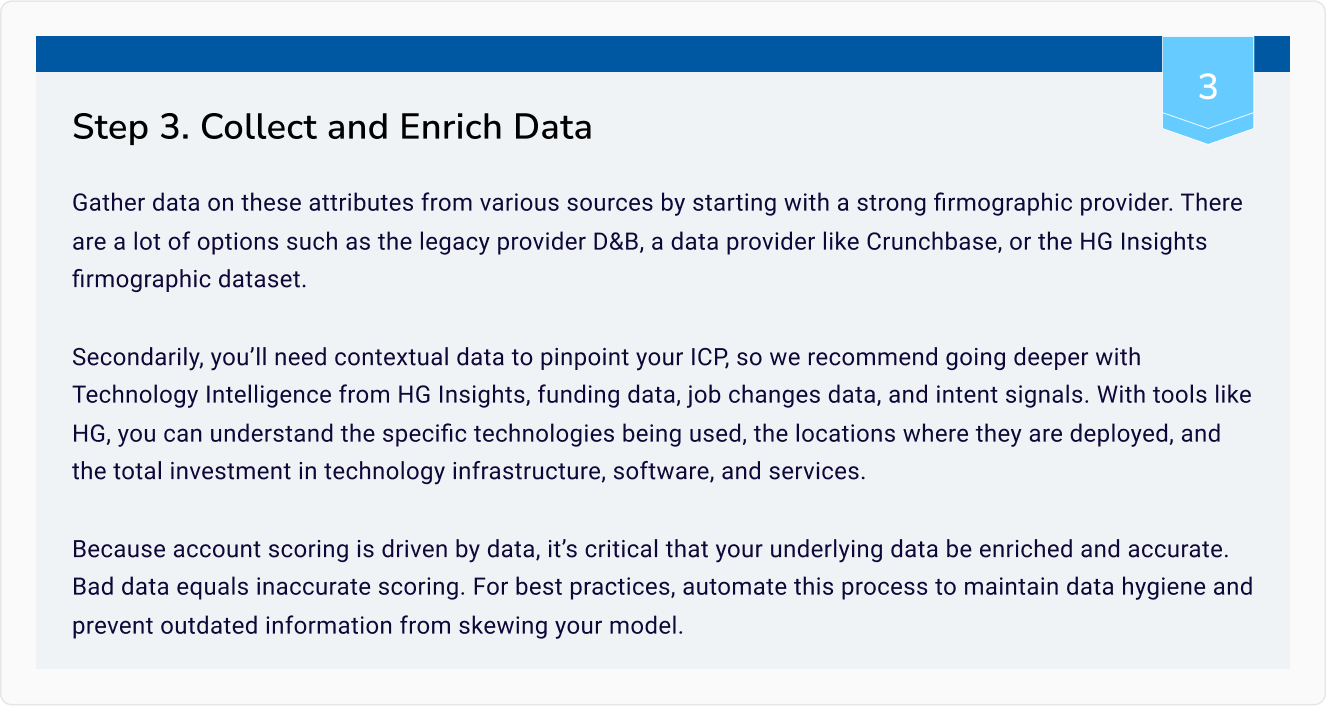
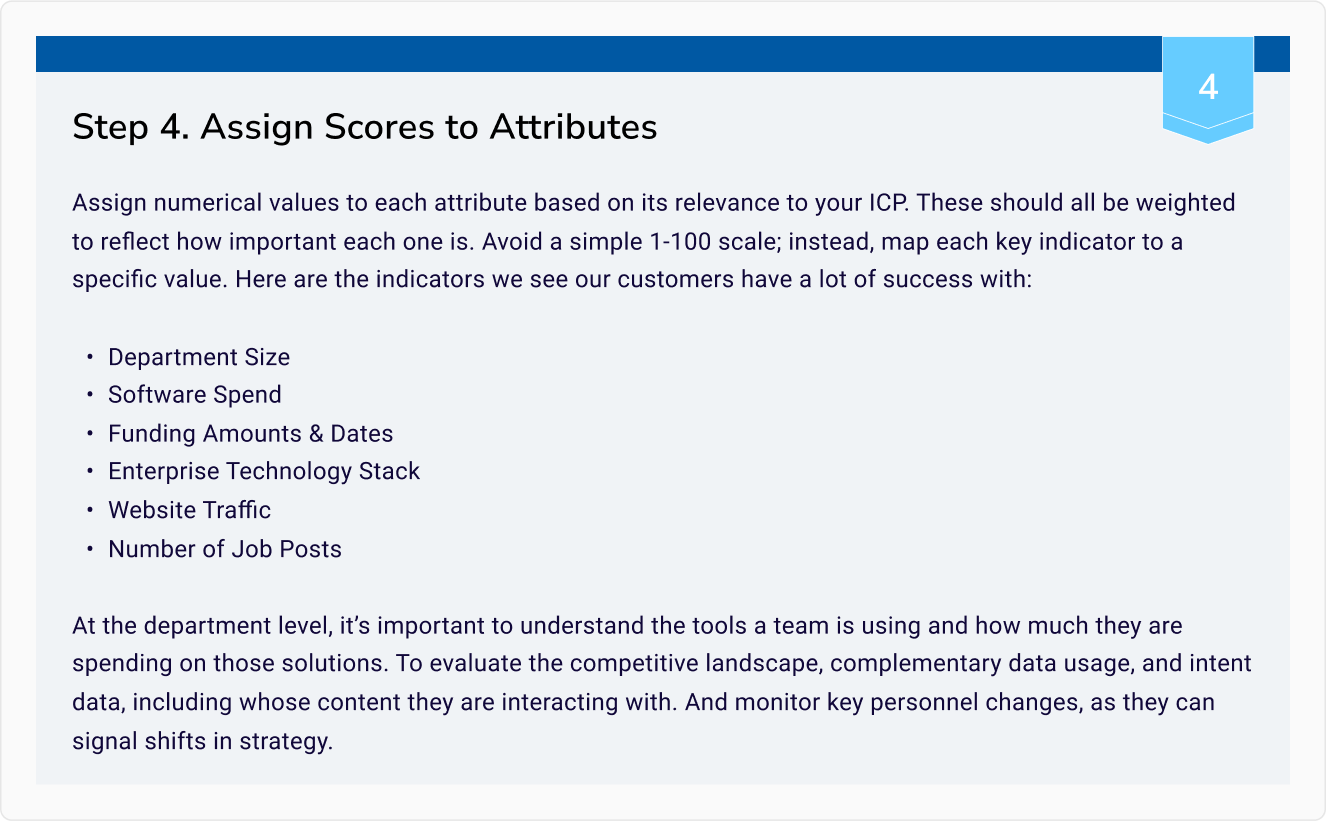
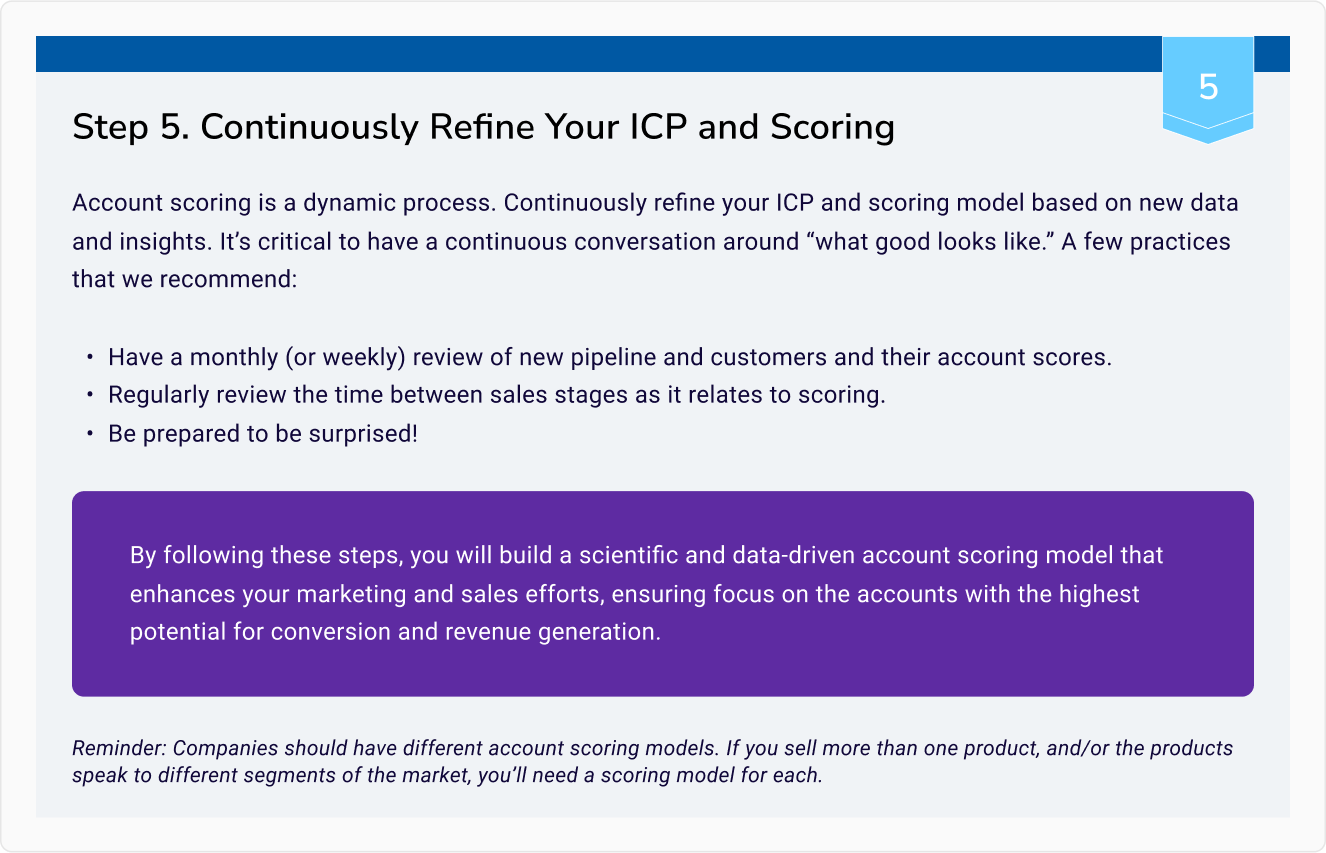
One effective way to define your ICP and core accounts is through the Fit vs. Need vs. Intent™ framework. This framework prioritizes and manages potential customers based on their stage in the buying journey. To determine what stage an account belongs to, analyze where the strongest data signals are coming from. Conversion rates here are based on HG’s historic experience, and the percentage of prospects who successfully converted into paying customers after being targeted by outbound marketing efforts.






Using the Fit vs. Need vs. Intent framework approach ensures that marketing and sales teams work cohesively, focusing on accounts that offer the highest potential for conversion and revenue generation.
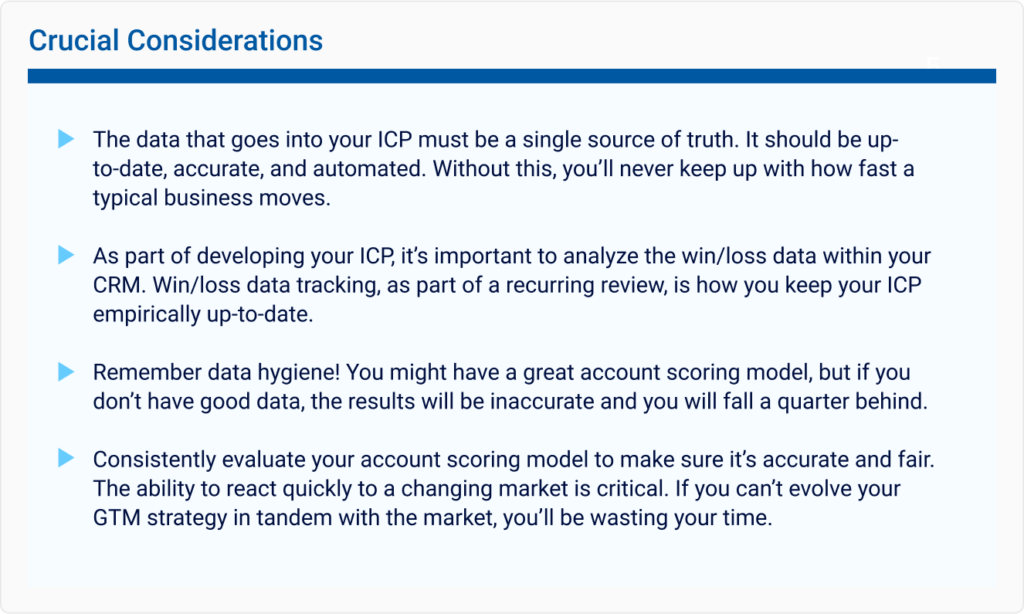

Get the information you need to make data-driven decisions: Top vendors, products in play,
market size, revenue distribution, and more.

At the heart of why we are bestin-class at Account Scoring is the depth of our data. Our Platform is a comprehensive, data-driven solution designed to help businesses navigate rapidly changing markets with precision and confidence. By leveraging world-class data and insights, our platform empowers organizations to identify highpotential prospects, prioritize key accounts, and optimize their sales and marketing resources.
Identify and prioritize top prospects in minutes using the deepest possible data. One of our core platform features is our account scoring capabilities. We enable you to create an Ideal Customer Profile (ICP) using our Quick Start Account Scoring feature, or develop a custom scoring profile tailored to your specific needs.

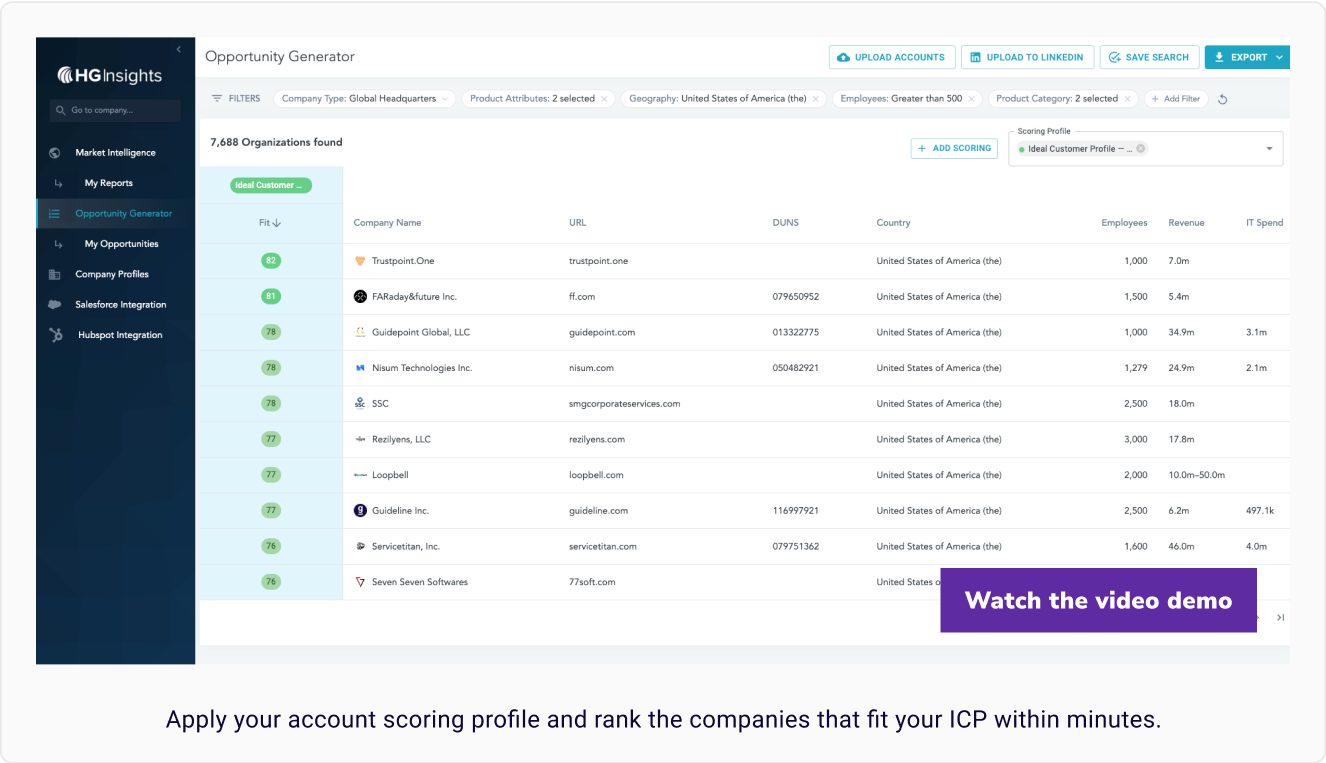
Develop a Data-backed ICP: Establish a foundational ICP within minutes using HG Insights’ manual ICP methodology, enhanced through automation.